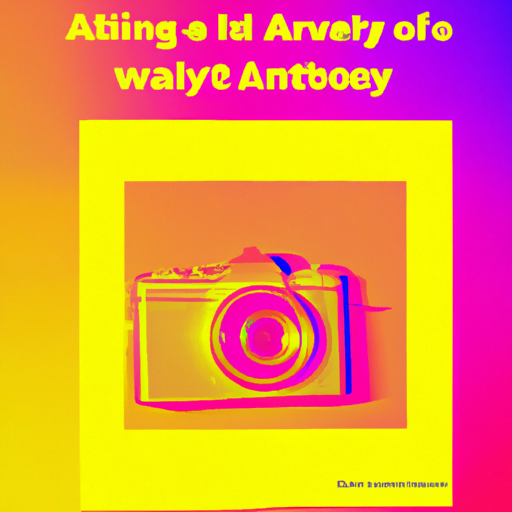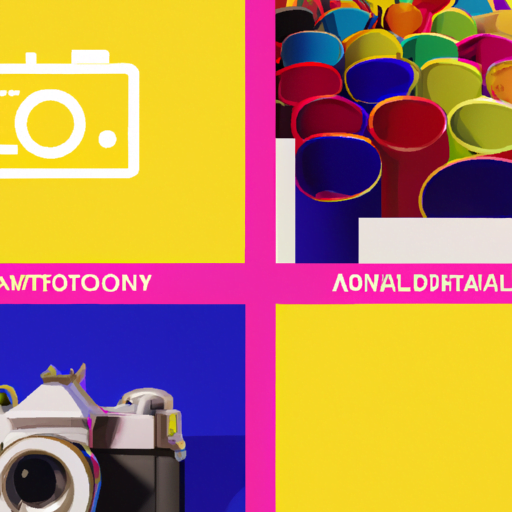
-
Table of Contents
- Designing for Inclusivity: Making Art Accessible to All
- The Importance of Inclusivity in Art
- Understanding the Challenges
- Strategies for Designing Inclusive Art Experiences
- 1. Physical Accessibility
- 2. Sensory Accessibility
- 3. Cognitive Accessibility
- Case Studies: Successful Examples of Inclusive Art Design
- 1. The Museum of Modern Art (MoMA) – New York, USA
- 2. Van Gogh Museum – Amsterdam, Netherlands
- 3. Tate Modern – London, UK
- Conclusion
Designing for Inclusivity: Making Art Accessible to All

Art has the power to inspire, provoke, and challenge our perceptions. It has the ability to transcend language and cultural barriers, connecting people from different backgrounds and experiences. However, for many individuals with disabilities, accessing and experiencing art can be a significant challenge. In this article, we will explore the importance of designing for inclusivity in the art world and discuss strategies and best practices for making art accessible to all.
The Importance of Inclusivity in Art
Art is a fundamental part of human expression and should be accessible to everyone, regardless of their abilities. Inclusivity in art not only ensures equal opportunities for individuals with disabilities but also enriches the overall artistic experience for all visitors. Here are some key reasons why designing for inclusivity in art is crucial:
- Promoting diversity and representation: By making art accessible to individuals with disabilities, we can promote diversity and representation in the art world. It allows for a more inclusive representation of different perspectives and experiences.
- Fostering empathy and understanding: Accessible art experiences can foster empathy and understanding among visitors. When individuals with disabilities are included in the artistic conversation, it helps break down barriers and challenges preconceived notions.
- Enhancing creativity and innovation: Inclusivity in art encourages creativity and innovation. By designing for diverse audiences, artists and designers are pushed to think outside the box and come up with new and exciting ways to engage with art.
- Complying with legal and ethical obligations: Many countries have laws and regulations in place that require public spaces, including art institutions, to be accessible to individuals with disabilities. Designing for inclusivity ensures compliance with these legal and ethical obligations.
Understanding the Challenges
Before we delve into the strategies for designing inclusive art experiences, it is essential to understand the challenges faced by individuals with disabilities when accessing art. Some common challenges include:
- Physical barriers: Many art institutions have physical barriers that make it difficult for individuals with mobility impairments to navigate the space. These barriers can include stairs, narrow doorways, and inaccessible restrooms.
- Sensory barriers: Individuals with sensory disabilities, such as blindness or deafness, may face challenges in accessing art that heavily relies on visual or auditory elements. Lack of audio descriptions, tactile experiences, or sign language interpretation can limit their engagement.
- Cognitive barriers: Some individuals with cognitive disabilities may struggle with understanding complex art concepts or navigating through crowded and overwhelming spaces. The lack of clear signage and wayfinding systems can further exacerbate these challenges.
Strategies for Designing Inclusive Art Experiences
Designing for inclusivity in the art world requires a thoughtful and holistic approach. Here are some strategies and best practices to consider:
1. Physical Accessibility
Creating a physically accessible environment is crucial for individuals with mobility impairments. Some key considerations include:
- Installing ramps or elevators to ensure access to all areas of the art institution.
- Ensuring doorways and pathways are wide enough to accommodate wheelchairs and mobility aids.
- Providing accessible restrooms with appropriate grab bars and clear signage.
- Designing seating areas throughout the institution to provide opportunities for rest and contemplation.
2. Sensory Accessibility
Art experiences should be designed to engage individuals with sensory disabilities. Here are some strategies to enhance sensory accessibility:
- Providing audio descriptions for visual artworks, allowing individuals with visual impairments to understand and appreciate the pieces.
- Offering tactile experiences, such as touchable replicas or 3D models of artworks, for individuals with visual impairments.
- Ensuring adequate lighting and contrast to assist individuals with low vision.
- Offering sign language interpretation or captioning for individuals with hearing impairments during guided tours or multimedia presentations.
3. Cognitive Accessibility
Designing for cognitive accessibility involves creating an environment that is easy to navigate and understand. Here are some strategies to consider:
- Using clear and concise signage throughout the institution to guide visitors and provide information about different areas.
- Implementing a wayfinding system that uses symbols and colors to assist individuals with cognitive disabilities in navigating the space.
- Providing written materials in plain language, making them easier to comprehend for individuals with cognitive impairments.
- Offering guided tours or educational programs that break down complex art concepts into more accessible language.
Case Studies: Successful Examples of Inclusive Art Design
Several art institutions and organizations have embraced inclusive design principles and successfully created accessible art experiences. Let’s explore a few notable examples:
1. The Museum of Modern Art (MoMA) – New York, USA
MoMA has made significant efforts to enhance accessibility for individuals with disabilities. They offer audio description tours, sign language interpretation, and touch tours for visitors with visual impairments. MoMA also provides accessible seating and assistive listening devices for individuals with hearing impairments.
2. Van Gogh Museum – Amsterdam, Netherlands
The Van Gogh Museum has implemented various inclusive design features, including tactile reproductions of Van Gogh’s artworks for individuals with visual impairments. They also offer audio tours with audio descriptions and sign language interpretation.
3. Tate Modern – London, UK
Tate Modern has taken steps to ensure physical accessibility by providing ramps, elevators, and accessible restrooms. They offer audio description tours, British Sign Language tours, and sensory backpacks for visitors with autism.
Conclusion
Designing for inclusivity in the art world is not only a legal and ethical obligation but also a way to enrich the artistic experience for all visitors. By considering physical, sensory, and cognitive accessibility, art institutions can create inclusive environments that allow individuals with disabilities to fully engage with and appreciate art. The examples and strategies discussed in this article demonstrate that with thoughtful design and implementation, art can be made accessible to all, fostering diversity, empathy, and creativity in the artistic community.
